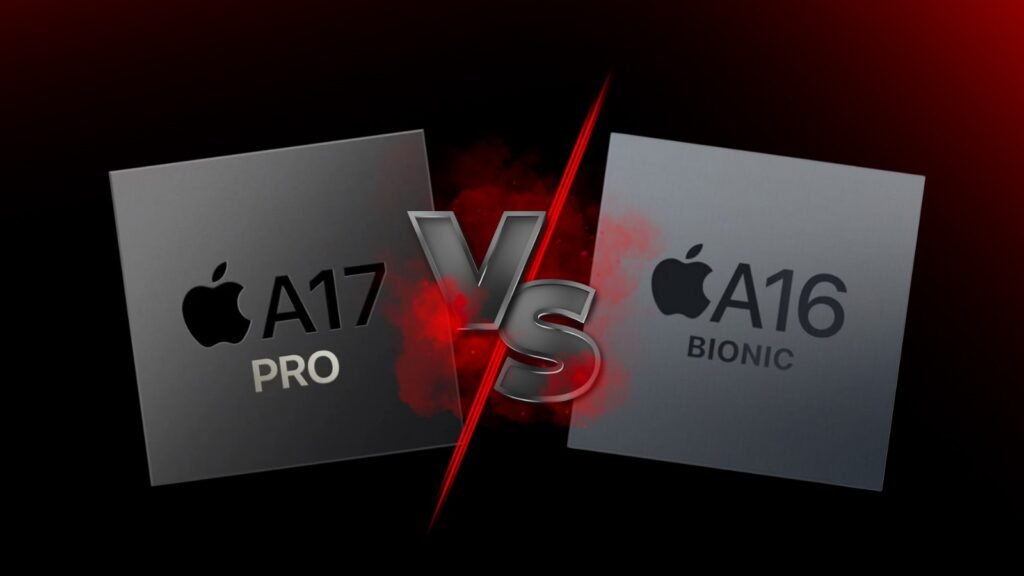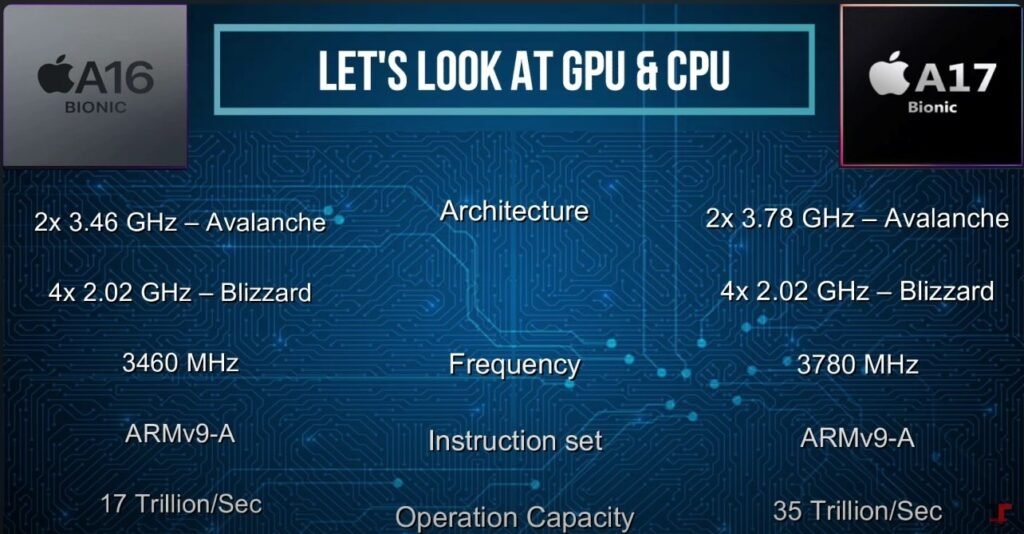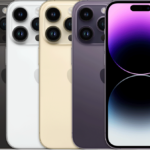
Table of Contents
A17 Pro Chip vs A16 Bionic Chip: A Comprehensive Comparison
The battle between smartphone processors is fierce, and Apple continues to lead the pack with its cutting-edge technology. In the latest iPhone 15 Pro, Apple has introduced the A17 Pro chip, building on the foundation laid by the A16 Bionic chip. This article provides an in-depth comparison of these two processors, highlighting their specifications, performance, and real-world implications.
Specifications Comparison Table
| Feature | A17 Pro Chip | A16 Bionic Chip |
|---|---|---|
| Manufacturing Process | 3nm | 4nm |
| CPU Cores | 6 cores (2 performance, 4 efficiency) | 6 cores (2 performance, 4 efficiency) |
| GPU Cores | 5 cores | 5 cores |
| Neural Engine | 16-core | 16-core |
| Transistor Count | 18 billion | 16 billion |
| Maximum Clock Speed | 3.46 GHz | 3.2 GHz |
| Memory Bandwidth | Increased | Standard |
| AI Performance | Enhanced AI capabilities | High efficiency |
| Battery Efficiency | Optimized | Efficient |
| Video Codec Support | Advanced support for AV1 | Standard support |








Performance Benchmarks
CPU Performance
In benchmark tests using Geekbench 6, the A17 Pro chip shows a significant improvement over the A16 Bionic chip, particularly in multi-core performance. The A17 Pro’s enhanced architecture and increased clock speed contribute to these gains:
- A17 Pro Chip: Multi-core score: 13,000+
- A16 Bionic Chip: Multi-core score: 11,000+
GPU Performance
The GPU performance of the A17 Pro chip also outpaces the A16 Bionic. This is particularly evident in graphics-intensive applications and gaming scenarios. The A17 Pro’s GPU supports more advanced rendering techniques and offers better efficiency:
- A17 Pro Chip: GPU score: 28,000+
- A16 Bionic Chip: GPU score: 24,000+
Real-World Implications
Battery Life
Battery life can vary significantly based on usage patterns. In general, both the A17 Pro and A16 Bionic chips are designed to maximize efficiency, but the A17 Pro’s 3nm process offers even better power management. Users can expect longer battery life during typical daily use with the A17 Pro, particularly when performing less intensive tasks.
Gaming
Gaming is one area where the A17 Pro’s superior GPU performance shines. Titles like Resident Evil Village, which demand high graphical fidelity and processing power, run more smoothly and efficiently on the A17 Pro. However, the real challenge remains in finding applications that fully utilize the A17 Pro’s capabilities.
Future-Proofing
One of the key advantages of opting for the iPhone 15 Pro with the A17 Pro chip is future-proofing. As applications become more demanding, the extra power and efficiency of the A17 Pro will ensure the device remains capable and responsive for years to come. Apple’s history of long-term software support further enhances the value proposition of choosing the latest processor.
Conclusion
While the A16 Bionic chip remains a powerhouse in its own right, the A17 Pro chip sets a new standard for performance and efficiency in smartphones. For users seeking the latest and greatest in mobile technology, the iPhone 15 Pro with the A17 Pro chip offers compelling advantages, particularly in terms of future-proofing, gaming performance, and overall efficiency.



